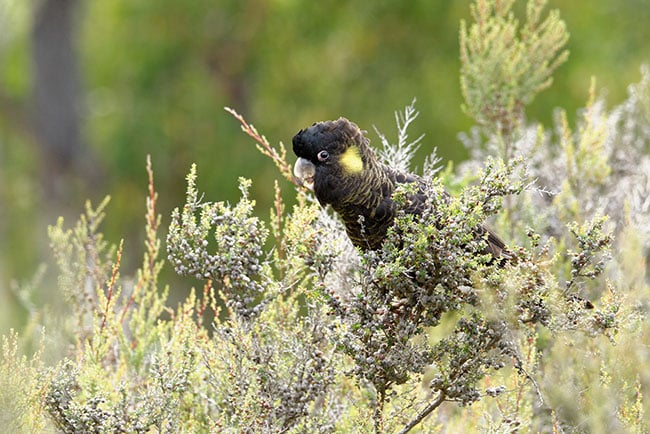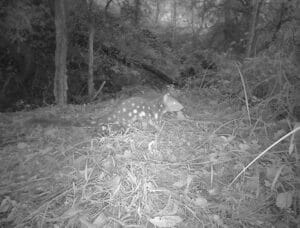 Story by Jessica Leck, Regional Landcare Coordinator. We all know that we live in a spectacular area, and for me, this is in not a small part due to the species we share this landscape with. Personally, nothing else feels quite like a homecoming welcome as the sight of black cockatoos floating across the sunset sky on a drive home. And it’s not just me, these black cockatoos are well-loved by our community, and some know they are pretty special, but what are they, and which ones are the really special ones?
Story by Jessica Leck, Regional Landcare Coordinator. We all know that we live in a spectacular area, and for me, this is in not a small part due to the species we share this landscape with. Personally, nothing else feels quite like a homecoming welcome as the sight of black cockatoos floating across the sunset sky on a drive home. And it’s not just me, these black cockatoos are well-loved by our community, and some know they are pretty special, but what are they, and which ones are the really special ones?
On the MidCoast, we actually have two of the five black cockatoo species of Australia; The glossy black cockatoo Calyptorhynchus lathami and the yellow-tailed cockatoo, Zanda funerea.
If you can get close enough, these birds do have definable differences. The Glossy Black Cockatoo has a glossy black plumage and a red tail band on males, while females have a yellow or orange cheek patch. Meanwhile, as the name suggests, the Yellow-tailed Cockatoo has a black body with yellow cheek patches and a bright yellow tail band on males.
The Glossy Black Cockatoo is found along the eastern coast of Australia, from southern Queensland to eastern Victoria. They prefer to live in woodlands and forests and feed primarily on the seeds of casuarina trees. Because of this specific diet, habitat clearing and inappropriate fire regimes have resulted in this species being listed as Vulnerable both state and federally. This means that if you see a red tail flying overhead, it’s a pretty special sight to be enjoyed.
But those ones that welcome me home a few nights a week, they are almost certainly Z. funerea. The Yellow-tailed Cockatoo is found in a variety of habitats, including woodlands, forests, and suburban areas. They are found across much of Australia, including the eastern and southern regions. They are much more generalist feeders, enjoying a variety of seeds, nuts, and fruits.
Planting the right types of trees and shrubs can be a great way to help support black cockatoos in your local area. Here are a few species that are particularly beneficial for these birds:
- Banksia: Yellow-tailed Black cockatoos love banksia trees, as they provide a source of nectar as well as insect larvae that the birds can feed on. Banksias are also great for attracting other types of wildlife to your garden.
- Casuarina: Locally, Glossy Black Cockatoos feed primarily on the seeds of Allocasuarina torulosa and A.littoralis trees, so planting these in your garden can provide a much-needed food source for these birds.
- Hakea: The nectar-rich flowers of hakea trees are another favourite food source for black cockatoos, particularly yellow-tailed black cockatoos.
Factors to consider
When planting trees and shrubs for black cockatoos, it’s important to consider the location and soil conditions in your garden to ensure that your plants will thrive. If you are interested in planting for biodiversity purposes, get in touch. Our ongoing partnership with Mid Coast Council Nursery can provide advice and plants for biodiversity projects free of charge.




